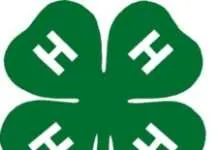K-State horticulture expert explains reasons, offers solutions
MANHATTAN, Kan. – For Kansas gardeners, watching vegetables bloom but not set fruit can be very frustrating.
Yet, for various reasons, that often happens this is the time of year, says Kansas State University horticulture expert Ward Upham.
“There are several possible reasons,” he said. “One condition that can affect several species is over-fertilization.”
Upham said that too much nitrogen in the soil causes the plant to emphasize vegetative growth, often to the detriment of fruit production. Over-fertilization can lead to a delay in flower production and a decrease in fruit set among the flowers that do produce.
“This is especially true of tomatoes,” Upham said. “Over-fertilized tomatoes will produce a large, apparently healthy plant with no flowers, or flowers that don’t set fruit.”
Tomatoes, a popular choice of many gardeners, also won’t set fruit if the night-time temperature falls below 50 degrees F, which leads to sparse pollen production, according to Upham.
“They also won’t set when night-time temperatures are above 75 degree and daytime temperatures are above 95 degrees with hot, dry winds,” he said. “Under such conditions, fertilization is not completed and no fruit develops. However, cherry tomatoes may be more forgiving of high temperatures than the larger slicers and will often set fruit in the heat.”
Upham said that many other crops – including squash, cucumbers, watermelon and muskmelon – can experience other problems.
“First, the early flowers on these plants are usually all male; the production of male and female flowers becomes more balanced as time passes,” he said. “You can easily tell the difference between the two because only the female flower has a tiny fruit behind the blossom.”
Upham said that if gardeners see both male and female flowers, have not fertilized, but still have a problem, it could be that the garden does not have enough pollinators.
“Look for the presence of bees visiting the plants,” Upham said. “If you don’t see any, try hand-pollinating several flowers. Use a painter’s brush to transfer pollen from the anther of the male flower to the stigma of the female flower. If you get fruit on any of those flowers you pollinated, you need more pollinators.”
Upham also cautioned against the over-use of insecticides, which can kill pollinators. He advises spraying near dusk when flowers have closed.
Upham and his colleagues in K-State’s Department of Horticulture and Natural Resources produce a weekly Horticulture Newsletter with tips for maintaining home landscapes. The newsletter is available to view online or can be delivered by email each week.
Interested persons can also send their garden- and yard-related questions to Upham at [email protected], or contact your local K-State Research and Extension office.
FOR PRINT PUBLICATIONS: Links used in this story
K-State Horticulture Newsletter, https://hnr.k-state.edu/extension/info-center/newsletters/index.html
K-State Research and Extension local offices, www.ksre.k-state.edu/about/stateandareamaps.html
K State Research and Extension is a short name for the Kansas State University Agricultural Experiment Station and Cooperative Extension Service, a program designed to generate and distribute useful knowledge for the well being of Kansans. Supported by county, state, federal and private funds, the program has county extension offices, experiment fields, area extension offices and regional research centers statewide. Its headquarters is on the K State campus in Manhattan. For more information, visit www.ksre.ksu.edu. K-State Research and Extension is an equal opportunity provider and employer.
Story by:
Pat Melgares
785-532-1160
[email protected]
For more information:
Ward Upham
785-532-6173
[email protected]





